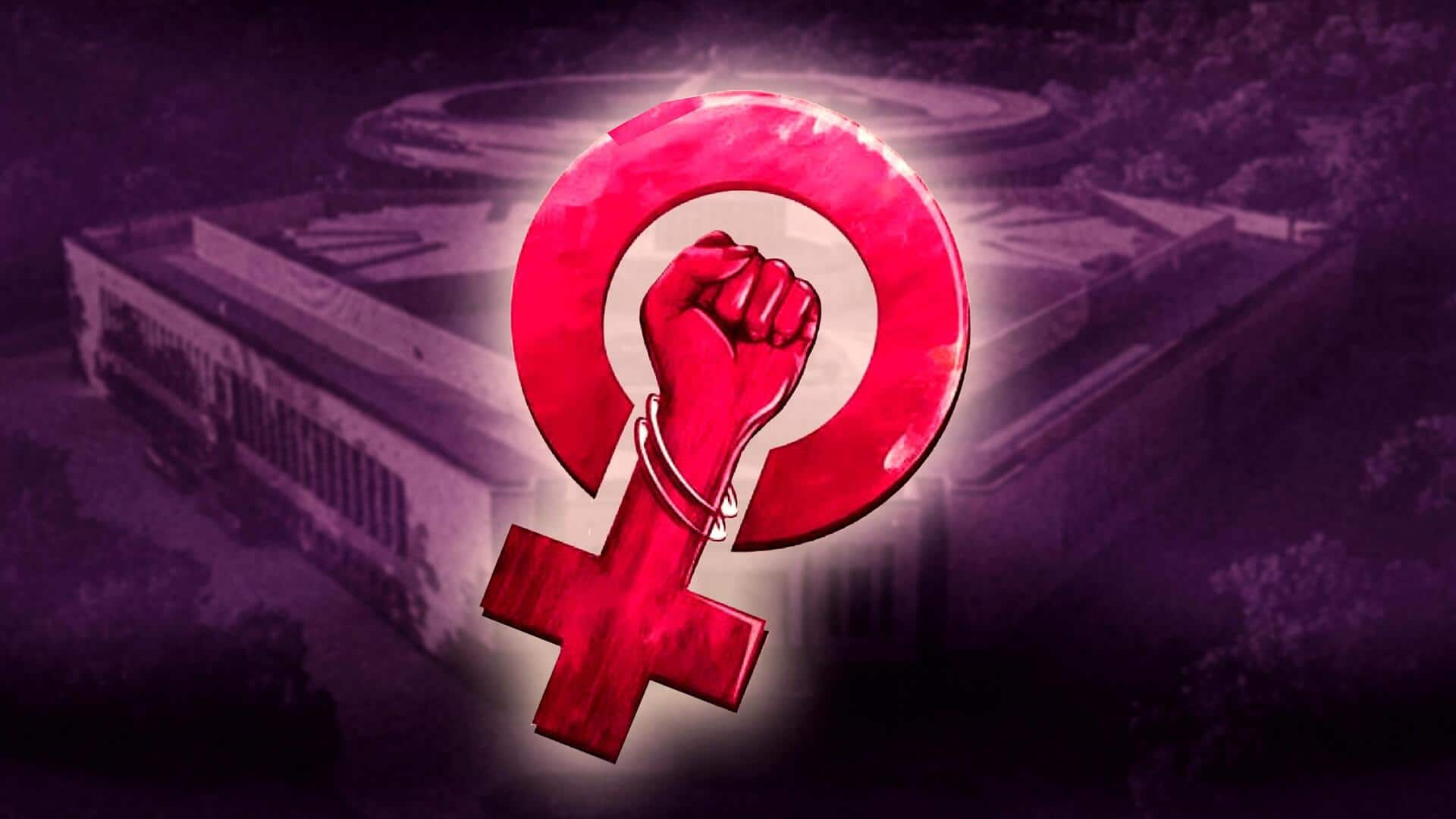
Women's Reservation Bill passed in Rajya Sabha with 215-0 votes
What's the story
The Nari Shakti Vandan Adhiniyam or the Women's Reservation Bill, seeking to reserve 33% of seats for women in the Lok Sabha and state assemblies, has been passed in the Rajya Sabha with 215-0 votes. The bill was cleared in the Lok Sabha on Wednesday with 454 votes in favor and two against it. The government introduced it this week, reviving a bill that had been dormant for 27 years due to a lack of consensus among parties.
Context
Why does this story matter?
The passage of this bill marks a historic step toward bridging the gender gap in Indian politics. Although the Bharatiya Janata Party (BJP) and the Congress were engaged in a tug-of-war over claiming credit for the bill, the achievement will go into the BJP's kitty and is likely to help the party in the upcoming state assembly polls and Lok Sabha elections. The bill was first introduced under the Congress-led government, which failed to get it passed in both Houses.
Details
SP, BSP change stand on bill
The bill was passed since parties opposing it for years, including the Samajwadi Party (SP) and Bahujan Samaj Party (BSP), changed their stand. The SP, which was at the forefront of opposition to the bill in 2010, supported it with caveats. The disagreement over the bill was due to demands for sub-quotas for women from Other Backward Classes (OBCs) and the Muslim community.
2010
What happened in 2010?
In 2010, the Rajya Sabha had passed the bill amid vociferous opposition, with 186 votes in favor and one against it. Two SP MPs had climbed atop then-Chairman Hamid Ansari's table. Four MPs of the SP and one each from the Rashtriya Janata Dal and the erstwhile Lok Janshakti Party (LJP) were suspended due to their unruly behavior. The rest of the SP and RJD MPs also walked out in protest, and 12 BSP MPs pulled out of the voting.
What next?
Implementation timeline raises concerns
However, the women's quota can only be implemented after the first delimitation of constituencies based on the next Census, likely in 2027. Therefore, the bill may not come into effect until 2029. Currently, there are 82 women MPs in the Lok Sabha and 24 in the Rajya Sabha. Notably, the women's reservation will not be extended to the Rajya Sabha and state legislative councils, but only to the Lower House and legislative assemblies.
Facts
Rajya Sabha composition has changed since 2010
This will take the strength of women in the Lok Sabha from 82 to 181 members. The composition of the Rajya Sabha has changed drastically since it passed the Women's Reservation Bill in 2010. The Congress, the single-largest party in the Upper House in 2010 with 71 members, now has only 30 seats. Meanwhile, the BJP has become the largest party in the Upper House with 94 members. This shift in power dynamics contributed to the passage of the bill.
Other countries
How do other countries fare?
Globally though, the countries with the highest representation of women in politics such as Sweden (46%), South Africa (45%), Australia (38%), France (35%), and Germany (35%) do not have reserved quotas for women, PRS Legislative Research reported. The political parties in those countries have adopted voluntary quotas for women. Bangladesh has reserved 50 out of 300 parliamentary seats for women and currently has 21% women MPs. African countries such as Eritrea, Rwanda, and Tanzania also have similar provisions.
Party-wise
BJD, TMC have highest women representation
India ranks 141 among 185 countries in women's political representation, as per the Inter-Parliamentary Union. Among the political parties in India, the Biju Janata Dal (BJD) ranks the highest with 42% of women MPs, followed by the Trinamool Congress (TMC) at 39%. The BJP and Congress stand at 14%. The PRS report showed that women candidates were as likely to win as men in parties with 10 or more MPs in the Lok Sabha.